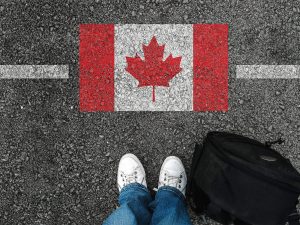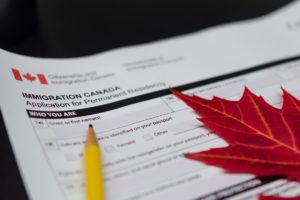The Covid pandemic has dominated 2020 and has significantly influenced immigration to Canada, but hope is on the way.
2020 has been quite the year.
The Covid pandemic has unleashed devastation around the globe, but there are a lot of causes for hope.
Various Covid vaccines have been created and vaccination campaigns are in progress around the globe incorporating here in Canada.
The beginning of the year was to a great extent uneventful for Canada’s immigration system. The Canadian government had a new mandate and new immigration minister following a federal election in end-2019.The government’s immigration mandate letter and official policy statements suggested no big changes. Canada would continue to welcome high levels of immigrants, international students, and foreign workers to help a solid economy and society.
At that point the Covid pandemic hit.
The following is an outline of what CIC News considers to be the top 5 Canadian immigration stories of 2020.
5. Canada exempts extended family from travel restrictions
On October 2nd, only a week before the country’s Thanksgiving holiday weekend, the Canadian government declared new big exemptions to its Covid travel limitations. In his comments that day, immigration minister Marco Mendicino admit that the travel limitations were generating difficulty for families in Canada, which is the why the government was softening its rules to permit expanded family members from Canadian citizens and permanent residents to enter the country.
Up until that point, the only family members exempt from the travel rules were immediate family (the spouses, common-law partners, dependent kid, grandchildren, parents or step-parents, and guardians or tutors of Canadian citizens and permanent residents).
The October 2nd declaration permitted for a more open definition of family, which now adds members in an specific and long-term relationship and their reliant kids, grandkids, siblings, half-and step-siblings and grandparents.
unnecessary to say, the exemption for expanded families carried huge help to Canadians who had not had the option to see their friends and family since the beginning of the pandemic.
4. International students are accommodated
The October 2nd declaration also exempted more international students from the travel limitations. Nonetheless, Canada had been gradually rolling out a series of big accommodations for international students throughout the pandemic.
Up until that declaration, just some international students were qualified to go to Canada, specifically the individuals who were in owner of a study permit when the travel limitations produced results.
However the largest accommodation, was declared by Immigration, Refugees and Citizenship Canada (IRCC) on May 14 and has shown to be CIC News’ most read story of 2020.IRCC expressed that international students could obtain their studies at Canadian colleges and universities while abroad up until December 31, 2020 and not have those studies influence their qualification for a Post-Graduation Work Permit (PGWP).
IRCC had previously declared a softness to its PGWP rules but it was just for a restricted period. By expanding it through to the last of the year, IRCC was fully encouraging international students to proceed with their Canadian studies during the pandemic. Before the changes, online studies couldn’t count towards PGWP qualification.
The reason the PGWP accommodation is so significant is that the vast majority of international students wish to move to permanent residence in Canada. Customarily, they require to get Canadian work experience after their studies here to be qualified for Canadian immigration. The PGWP has shown to be a cornerstone of such endeavors, and is now by far Canada’s most famous work permit option. The PGWP empowers international students to obtain work experience they require to be qualified for permanent residence, and in the end make the transition to becoming the Canadian citizens of tomorrow.
Without IRCC’s accommodations, numerous international students would almost certainly have either deciding studying in Canada, or deferred their studies, which would have harmed the Canadian economy considerably further. Rather, IRCC’s changes furnished students with the green light to start their studies online, and still gain the advantages of the PGWP.
IRCC has since expanded its PGWP qualification period again through to April 30, 2021.
3. Express Entry records are shattered
The greater part of Canada’s migrants are welcomed as economic class skilled workers, and Express Entry is the primary way Canada oversees skilled worker applications.
Preceding the pandemic, Express Entry draws were happening roughly every two weeks, Generally on Wednesday’s, with between 3,000-4,000 successful applicants getting immigration invitations each draw.
Canada’s declaration of travel limitations on March 16,generated uncertainty about Express Entry. It was undisclosed if draws would proceed and whether applicants who were abroad would be considered.
On Wednesday March 18, the routinely scheduled Express Entry draw happened, however in what was a rarity at that time, just Provincial Nominee Program (PNP) applicants were thought of. In another extraordinariness, IRCC continued to hold another draw only a some days after on Monday March 23, in which it just understand Canadian Experience Class (CEC) applicants.
Federal Skilled Worker Program (FSWP) applicants make up the lion’s share of successful Express Entry migrants, but they sat restlessly over the months to follow as IRCC just invited PNP and CEC applicants.
At last, on July 8, FSWP applicants were once again added in an Express Entry draw and IRCC has adhered to “all-program draws” since September 2nd.
The largest Express Entry story of the year is the sheer extent of the draw sizes. To make up for lower immigration to Canada this year, IRCC is holding the biggest Express Entry draws since the system was started in 2015, with 5,000 invitations being provided each draw, and Express Entry outperforming 100,000 invitations for the first time ever.
This spells good news for people who wish to give an application for immigration to Canada as skilled workers in 2021 and past.
2. Immigration Levels Plan 2021-2023
The Immigration Levels Plan declaration will in tends to be IRCC’s most significant of the year as it outlines the number of newcomers Canada purpose to welcome and the targets under the respective economic, family, and refugee classes. In recent years, the declaration has been enough anticlimactic as the federal government worked towards ran after welcoming more than 300,000 new migrants per year.
Given that Express Entry and the overall immigration system continued to work since the beginning of the pandemic, the normal anticipation was that the Immigration Levels Plan 2021-2023 would also demonstrate anticlimactic.
In an dramatic twist, however, Marco Mendicino declared on October 30th that Canada would set out on the most ambitious immigration plan in its history.
Starting in 2021, Canada will purpose for the arrival of more than 400,000 new permanent residents every year. Canada has just accomplished this purpose once in its history, back in 1913.
The 400,000 figure has been set to offset lower migration to Canada during the pandemic, and also to help Canada’s post-Covid economic recuperation.

But, the declaration will be discussed among Canadian history classes and in policy settings well past the pandemic, for quite a long time to come. It marks the start of a new era in Canadian immigration and will have important economic and social implications for the country and its people.
Look at that as a immigration purpose over 400,000 could see Canada become a nation of 100 million individuals by 2100, which would make it one of the world’s most populated and perhaps influential countries.
Canada presently has 38 million individuals, which means its positions 39th globally in populace. A Canada of 100 million individuals in 2100 could to include the top 20 countries in populace.
1.Canada shuts the border
On the morning of Monday March 16, Canada’s PM Justin Trudeau stepped before a podium in front of his home and declared to a national audience that Canada would be closing its borders as of March 18.
This was an unreal moment.
Trudeau, Mendicino, and the rest of the Canadian government proudly emphasized Canada’s openness to worldwide ability. Since taking down to business in November 2015, Trudeau and his associates started significant initiatives to welcome refugees from Syria and different parts of the world in required, while also looking to bring families together, and welcome more ability as migrants, foreign workers, and students.
Indeed, only four days before Trudeau’s discourse, Mendicino had declared Canada’s 2020-2022 Immigration Levels Plan.
The dramatic discourse by Trudeau made the Covid pandemic hit closer to home for Canadian immigration stakeholders and members abroad searching to come to Canada. It also demonstrated how liquid the pandemic was. The government didn’t understand the gravity of the circumstances days before, until public health specialists emphasized the significance of closing the borders to contain the spread of COVID-19, which clearly put a dent in the 2020-2022 levels plan.
The presentation of travel limitations will affect Canada’s immigration system for years to come, as IRCC will require time to process the backlog of applications reasoned by the pandemic, and will be required to modernize its system so it can process applications more rapidly after the pandemic is well behind us.
Although the pandemic will lastingly affect the immigration system, it has not changed the reasoning of Canada’s immigration policy. As shown by stories # 2-5, Canada keeps on committed to welcoming worldwide ability to help a solid economy and society.



















